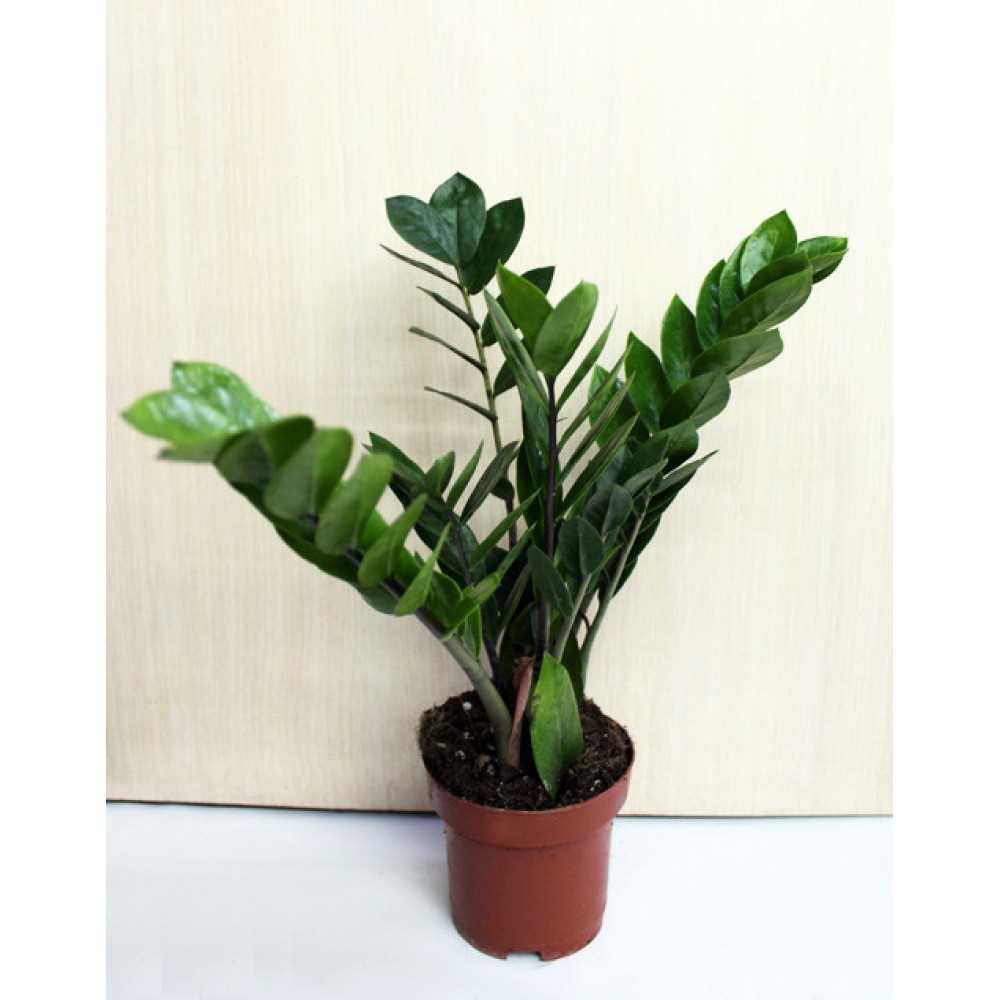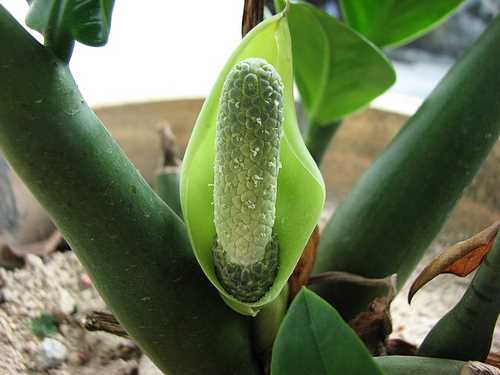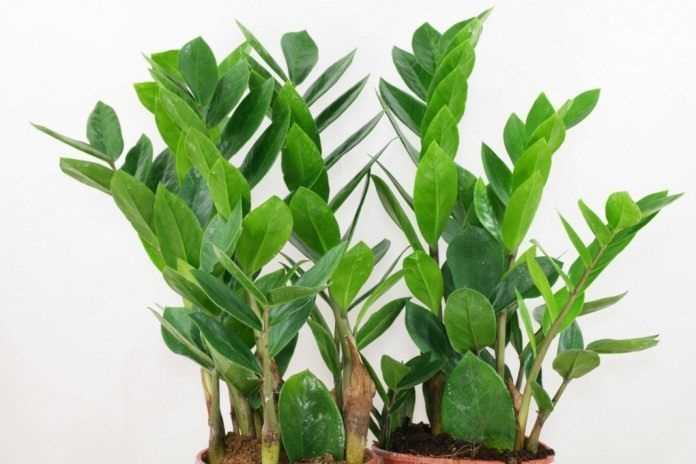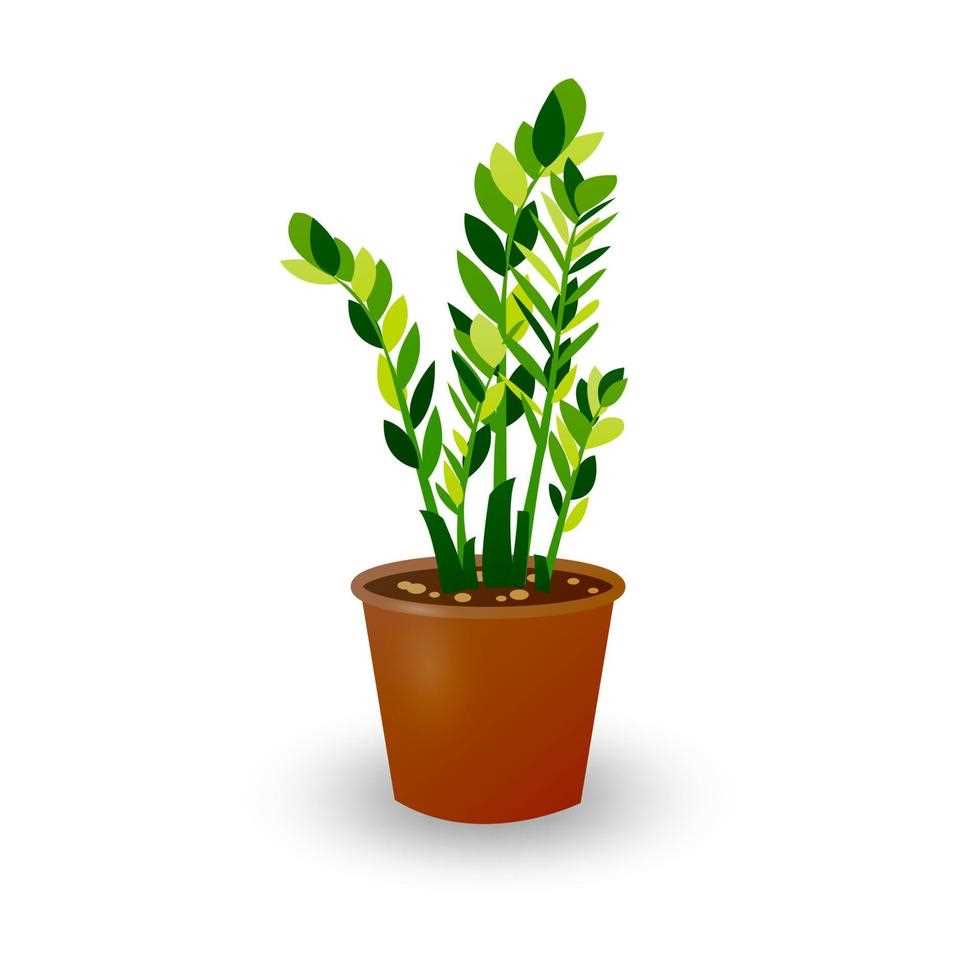- Choosing a Healthy Plant
- 1. Green and vibrant leaves
- 2. Thick and firm stems
- 3. No signs of pests or disease
- 4. Healthy root system
- 5. Balanced shape
- 6. Size and growth
- Signs of a Sickly Plant
- 1. Yellowing or Browning Leaves
- 2. Wilting or Drooping Leaves
- 3. Stunted Growth
- 4. Yellow or Black Spots on Leaves
- 5. Weak or Thin Stems
- 6. Root Rot or Mushy Roots
- Inspecting the Roots
- Steps to inspect the roots:
- Tips for inspecting the roots:
- Reviving a Sickly Zamioculcas
- 1. Assess the condition of the plant
- 2. Adjust watering and drainage
- 3. Trim diseased or damaged parts
- 4. Provide proper lighting
- 5. Adjust humidity levels
- 6. Fertilize appropriately
- 7. Repot if necessary
- 8. Monitor and adjust care routine
- 9. Consult a professional
- Proper Watering and Light Conditions
- Watering
- Light Conditions
- Pruning and Repotting
- Pruning
- Repotting
- Preventing Future Issues
- 1. Provide the right amount of light
- 2. Water the plant correctly
- 3. Avoid temperature extremes
- 4. Dust the leaves
- 5. Fertilize sparingly
- 6. Monitor for pests
- 7. Repot when necessary
- 8. Observe and adjust
- Q&A:
- How can I tell if my Dollar Tree Zamioculcas is sick?
- How do I revive a sickly Dollar Tree Zamioculcas?
- Can overwatering cause a Dollar Tree Zamioculcas to become sick?
- How often should I water my Dollar Tree Zamioculcas?
- What are some signs of pest infestation in a Dollar Tree Zamioculcas?
- Video: How to repotting Zamioculcas plant / ZZ plant
When it comes to indoor plants, the Zamioculcas, also known as the ZZ plant, is a popular choice among homeowners. Its lush green leaves and ability to thrive in low-light conditions make it a favorite for those with less-than-ideal living spaces.
However, if you’ve recently purchased a Zamioculcas from Dollar Tree, you may have noticed that your plant is looking a bit worse for wear. Don’t worry, though – with a little inspection and some simple care, you can revive your sickly Dollar Tree Zamioculcas and bring it back to life.
The first step in reviving a sickly Zamioculcas is to carefully inspect the plant. Look for any yellowing or browning leaves, as this can be a sign of overwatering or underwatering. Take note of any signs of pests, such as mealybugs or spider mites, which can be easily treated with a natural insecticide or by wiping the affected leaves with a damp cloth.
Once you’ve inspected your plant and identified any issues, it’s time to give it some care. Start by adjusting its watering schedule – if the soil feels dry to the touch, it needs watering, but if it feels soggy, it’s a sign of overwatering. Gradually increase or decrease the frequency of watering until you find the right balance.
In addition to proper watering, it’s important to provide your Dollar Tree Zamioculcas with the right amount of light. While the plant can tolerate low-light conditions, it still needs some indirect sunlight to thrive. Place it near a window with filtered light or invest in a grow light if your home doesn’t receive enough natural light.
With regular inspection, proper watering, and adequate light, your Dollar Tree Zamioculcas should begin to recover and regain its healthy appearance. Don’t be discouraged if it takes some time – plants can be resilient if given the right care and attention.
Choosing a Healthy Plant
When shopping for a Dollar Tree Zamioculcas at a store, it’s important to choose a plant that is healthy and strong. Here are some tips on what to look for:
1. Green and vibrant leaves
Inspect the leaves of the plant to ensure they are a deep, dark green color and look vibrant. Avoid plants with yellow or brown leaves, as this may indicate that the plant is not healthy.
2. Thick and firm stems
Check the stems of the plant to make sure they are thick and firm. Avoid plants with thin, weak stems, as they may not be able to support the weight of the leaves and may be prone to breaking.
3. No signs of pests or disease
Examine the plant carefully for any signs of pests or disease. Look for spots, webs, or holes in the leaves, as well as any visible bugs or insects. Choosing a plant that is free from pests and disease will help ensure its overall health.
4. Healthy root system
If possible, gently remove the plant from its container to check the root system. Healthy roots should be plump and white or light brown in color. Avoid plants with rotting or blackened roots, as this may indicate root damage or disease.
5. Balanced shape
Take a step back and observe the overall shape of the plant. Look for a well-balanced shape with leaves evenly spaced. Avoid plants that appear lopsided or have an uneven distribution of leaves, as this may indicate poor growth or care.
6. Size and growth
Consider the size and growth of the plant. Choose a plant that is proportionate to its container and appears to be actively growing. Avoid plants that are stunted or have a lack of new growth, as this may indicate underlying health issues.
Following these tips will help you choose a healthy Dollar Tree Zamioculcas plant that will thrive in your home or office. Remember to provide proper care and maintenance to ensure its ongoing health and vitality.
Signs of a Sickly Plant
1. Yellowing or Browning Leaves
One of the first signs that a Zamioculcas plant is not doing well is the yellowing or browning of its leaves. This can be caused by various factors, including overwatering, underwatering, lack of nutrients, or exposure to extreme temperatures. Observing the color of the leaves can help identify the underlying problem.
2. Wilting or Drooping Leaves
If the leaves of the Dollar Tree Zamioculcas are wilting or drooping, it is a clear sign of distress. This can occur due to underwatering, overwatering, or even root rot. Adjusting the watering schedule and ensuring proper drainage can help revive the plant.
3. Stunted Growth
If the plant is not growing as expected or if new leaves are smaller than usual, it may be a sign of a sickly plant. Stunted growth can indicate nutrient deficiencies, improper lighting conditions, or root-related issues.
4. Yellow or Black Spots on Leaves
Yellow or black spots on the leaves can indicate the presence of pests or diseases. Common pests that can affect Zamioculcas plants include spider mites, mealybugs, and scale insects. Treating the infestation promptly and providing proper care can help the plant recover.
5. Weak or Thin Stems
If the stems of the plant appear weak or thin, it can be a sign of a sickly plant. This may be caused by insufficient light, improper watering, or nutrient deficiencies. Adjusting the plant’s environment and providing appropriate care can help strengthen the stems.
6. Root Rot or Mushy Roots
Root rot is a common problem in Zamioculcas plants that are overwatered or have poor drainage. If the plant appears unhealthy, it is essential to check the roots for any signs of rot or mushiness. Trimming off any affected roots and repotting the plant in well-draining soil can help restore its health.
| Signs | Possible causes |
|---|---|
| Yellowing or browning leaves | Overwatering, underwatering, lack of nutrients, extreme temperatures |
| Wilting or drooping leaves | Underwatering, overwatering, root rot |
| Stunted growth | Nutrient deficiencies, improper lighting conditions, root issues |
| Yellow or black spots on leaves | Pests or diseases |
| Weak or thin stems | Insufficient light, improper watering, nutrient deficiencies |
| Root rot or mushy roots | Overwatering, poor drainage |
Identifying these signs early on and taking appropriate action can help revive a sickly Dollar Tree Zamioculcas plant and restore its health and beauty.
Inspecting the Roots

When reviving a sickly Dollar Tree Zamioculcas plant, one of the most important steps is inspecting the roots. The roots play a crucial role in providing the plant with nutrients and water, so it’s essential to ensure they are healthy and intact.
Steps to inspect the roots:
- Remove the plant from its pot: Carefully remove the Zamioculcas plant from its pot, gently loosening the soil around the roots. Be cautious not to damage the root system during this process.
- Examine the roots: Take a closer look at the roots of the plant. Healthy roots should be firm, white, and slightly fleshy. If you notice any soft, mushy, or discolored roots, it may indicate root rot or other underlying issues.
- Trim off damaged roots: If you come across any damaged or unhealthy roots during the inspection, use a clean pair of scissors or pruning shears to trim them off. Make sure to remove only the affected parts and leave the healthy roots intact.
- Check for overcrowding: Sometimes, the roots of a Dollar Tree Zamioculcas plant can become overcrowded, leading to poor growth and health. Look for signs of overcrowding, such as tangled or root-bound roots. If necessary, gently untangle the roots or consider repotting the plant in a larger container.
Tips for inspecting the roots:
- Use a clean environment: Ensure that your working area, tools, and hands are clean before inspecting the roots. This reduces the risk of introducing any pathogens or contaminants to the plant.
- Be gentle: Handle the plant and its roots with care to avoid causing any additional damage. Use a light touch when loosening the soil or trimming off damaged roots.
- Look for healthy new growth: Healthy roots often contribute to new growth in a plant. Keep an eye out for new shoots or leaves emerging from the base of the plant, as it indicates that the roots are functioning well.
- Consider using a magnifying glass: If you want to examine the roots more closely, you can use a magnifying glass to get a better view. This can help you identify any pests or abnormalities that may be affecting the health of the roots.
Inspecting the roots of a Dollar Tree Zamioculcas plant is an essential step in reviving a sickly plant. By carefully examining the roots and taking appropriate actions, you can address any issues and help the plant regain its health and vitality.
Reviving a Sickly Zamioculcas
If your Dollar Tree Zamioculcas is looking sickly, there are several steps you can take to revive it and bring it back to health. Follow these guidelines to help your plant recover:
1. Assess the condition of the plant
Examine the leaves, stems, and roots of your Zamioculcas. Look for signs of wilting, yellowing, or browning leaves, as well as any signs of pests or diseases.
2. Adjust watering and drainage
Zamioculcas prefer to be slightly dry between waterings. Overwatering can cause root rot and lead to a sickly plant. Ensure that the pot has proper drainage holes and that the soil is well-draining.
3. Trim diseased or damaged parts
If you notice any diseased or damaged leaves or stems, carefully trim them using clean pruning shears or scissors. This will help promote new growth and prevent the spread of any diseases.
4. Provide proper lighting
Zamioculcas thrive in bright, indirect light. If your plant is not receiving enough light, consider moving it to a brighter location or supplementing with artificial grow lights.
5. Adjust humidity levels
Zamioculcas prefer moderate humidity levels. If the air in your home is too dry, consider placing a tray of water near the plant or using a humidifier to increase the humidity.
6. Fertilize appropriately

During the growing season, it is beneficial to fertilize your Zamioculcas with a balanced, water-soluble fertilizer. Follow the instructions on the fertilizer packaging for proper dosage and frequency.
7. Repot if necessary
If your Zamioculcas is severely root-bound or if the soil is overly compacted, it may be necessary to repot the plant. Choose a pot that is slightly larger than the current one and use a well-draining potting mix.
8. Monitor and adjust care routine
After taking these steps, closely monitor your Zamioculcas and adjust its care routine as needed. Pay attention to its watering needs, light levels, and any signs of improvement or decline.
9. Consult a professional
If your Zamioculcas continues to decline or if you are unsure about the best course of action, consider consulting a professional plant care specialist or horticulturist for further guidance.
By following these steps and providing proper care, you can revive your sickly Zamioculcas and enjoy a healthy and vibrant plant.
Proper Watering and Light Conditions

Proper watering and providing adequate light conditions are crucial for the health and well-being of your Dollar Tree Zamioculcas plant. Here are some important guidelines to follow:
Watering
- Water the plant only when the top inch of soil feels dry to the touch. Overwatering can lead to root rot and other issues, so it is essential to avoid excessive watering.
- Ensure that the pot has proper drainage to prevent water from sitting at the bottom, which can also cause root rot. If the pot does not have drainage holes, consider repotting the plant into a container with adequate drainage.
- When watering, apply water until it starts to flow out of the drainage holes, ensuring that the soil is evenly moist. Discard any excess water that collects in the saucer or tray.
- During the winter months, when the plant is in its resting period, reduce the frequency of watering. Allow the soil to dry out slightly between waterings.
Light Conditions

- Zamioculcas plants require bright, indirect light to thrive. Place your plant in a location where it can receive bright, filtered light for several hours a day. Avoid placing it in direct sunlight, as it can scorch the leaves.
- If your plant is not receiving enough light, it may become leggy and pale. Move it to a brighter location or consider supplementing with artificial light, such as fluorescent or grow lights.
- Rotate the plant every few weeks to ensure that all sides receive equal light exposure. This helps promote even growth and prevents the plant from leaning towards the light source.
By following these guidelines for proper watering and providing adequate light conditions, you can help revive your sickly Dollar Tree Zamioculcas plant and promote its overall health and vitality.
Pruning and Repotting
Pruning and repotting are important aspects of caring for a sickly Dollar Tree Zamioculcas plant. By properly pruning and repotting, you can help revive the plant and ensure its overall health and well-being.
Pruning

Pruning involves removing dead or damaged leaves, as well as any unhealthy or overcrowded stems. It helps improve the plant’s appearance and promotes new growth.
- Start by inspecting the plant and identifying any dead or yellowing leaves. These leaves can be easily removed by gently pulling them off the stem.
- If you notice any stems that are leggy or crowded, consider cutting them back to encourage a more compact and balanced growth. Use a clean and sharp pair of pruning shears to make clean cuts just above a node or joint.
- Be careful not to prune off too much foliage at once, as this can stress the plant. Instead, opt for gradual pruning sessions, spacing them out over several weeks.
Repotting
Repotting a sickly Dollar Tree Zamioculcas plant can help improve its overall health by providing fresh soil and more space for growth. Here’s how to do it:
- Choose a pot that is slightly larger than the current one, with drainage holes at the bottom.
- Prepare a well-draining potting mix by combining equal parts of peat moss, perlite, and sand.
- Gently remove the plant from its current pot, being careful not to damage the roots.
- Inspect the roots and trim any that appear brown, mushy, or rotting.
- Place a layer of the prepared potting mix at the bottom of the new pot.
- Position the plant in the center of the pot and fill in the sides with more potting mix, ensuring that the plant is at the same level as it was in the previous pot.
- Water the plant thoroughly and place it in a location with bright, indirect light.
- Monitor the plant closely and adjust its watering schedule as needed.
By following these pruning and repotting techniques, you can give your sickly Dollar Tree Zamioculcas plant a fresh start and help it thrive once again.
Preventing Future Issues
Once you have successfully revived your Dollar Tree Zamioculcas plant, it’s important to take steps to prevent future issues and keep your plant healthy. Here are some tips to help you maintain the health of your Dollar Tree Zamioculcas:
1. Provide the right amount of light
Dollar Tree Zamioculcas plants thrive in bright, indirect light. Avoid placing them in direct sunlight, as it can scorch their leaves. Place your plant near a window with filtered light or in a spot with bright, indirect light to ensure it receives the optimal amount of light.
2. Water the plant correctly

Overwatering is one of the most common issues with Dollar Tree Zamioculcas plants. It’s important to allow the soil to dry out between waterings to prevent root rot. Stick your finger about an inch into the soil – if it feels dry, it’s time to water. Ensure proper drainage by using a well-draining potting mix and a pot with drainage holes.
3. Avoid temperature extremes
Dollar Tree Zamioculcas plants prefer moderate temperatures between 60-85°F (15-29°C). Avoid placing them near drafts or in areas with extreme temperature fluctuations, such as near heating vents or air conditioning units.
4. Dust the leaves
Regularly dust the leaves of your Dollar Tree Zamioculcas plant to keep them clean and allow better absorption of light. Use a soft, damp cloth or a gentle spray of water to remove any dust or debris that may accumulate on the leaves.
5. Fertilize sparingly
Dollar Tree Zamioculcas plants are low-maintenance and don’t require frequent fertilization. Use a balanced, water-soluble houseplant fertilizer once every 6-8 weeks during the growing season (spring and summer). Follow the package instructions for proper dilution and application.
6. Monitor for pests
Keep an eye out for common houseplant pests such as mealybugs and spider mites. If you notice any signs of infestation, such as webs, sticky residue, or discolored leaves, take immediate action to treat the plant. Use an appropriate insecticidal soap or natural pest control method to get rid of the pests.
7. Repot when necessary
If the roots of your Dollar Tree Zamioculcas become overcrowded or start to grow out of the drainage holes, it’s time to repot the plant. Choose a slightly larger pot with drainage holes and fresh potting mix. Repotting every 1-2 years will help promote healthy growth and prevent root-bound plants.
8. Observe and adjust
Every plant has unique needs, so it’s important to observe your Dollar Tree Zamioculcas regularly and make adjustments accordingly. Pay attention to the overall health of the plant, its growth rate, and any changes in appearance. This will help you identify and address any issues promptly.
By following these preventive measures, you can ensure the continued health and vitality of your Dollar Tree Zamioculcas plant for years to come.
Q&A:
How can I tell if my Dollar Tree Zamioculcas is sick?
If your Dollar Tree Zamioculcas is sick, it may have droopy or yellowing leaves, root rot, or pests like mealybugs or spider mites.
How do I revive a sickly Dollar Tree Zamioculcas?
To revive a sickly Dollar Tree Zamioculcas, you should first inspect the plant for any signs of pests or root rot. If pests are present, treat them with insecticidal soap or neem oil. If root rot is the issue, you should re-pot the plant in fresh, well-draining soil and trim away any rotting roots. Finally, ensure that the plant is receiving the correct amount of water and light for its needs.
Can overwatering cause a Dollar Tree Zamioculcas to become sick?
Yes, overwatering can cause a Dollar Tree Zamioculcas to become sick. This plant prefers to dry out between waterings, so if it is consistently overwatered, it can develop root rot, which can lead to droopy or yellowing leaves.
How often should I water my Dollar Tree Zamioculcas?
You should water your Dollar Tree Zamioculcas when the top inch of soil feels dry to the touch. This usually translates to watering every 2-3 weeks, but it can vary depending on factors such as the size of the pot, the temperature, and the amount of light the plant is receiving.
What are some signs of pest infestation in a Dollar Tree Zamioculcas?
Some signs of pest infestation in a Dollar Tree Zamioculcas include tiny webs or webbing, tiny moving dots on the leaves, or sticky or shiny residue on the leaves. You may also notice yellowing or wilting leaves, stunted growth, or distorted foliage. Pests commonly found on this plant include mealybugs, spider mites, and scale insects.
Video:
How to repotting Zamioculcas plant / ZZ plant







